What if managing your finances could be as simple as a conversation? In 2025, financial management platforms are transforming the way individuals and businesses handle their money. These platforms offer real-time tracking, automated insights, and seamless integration with existing systems, making it easier than ever to stay on top of your budget.
With features like expense tracking and scenario simulations, users can make informed decisions to improve their financial health. Pricing models vary, but many platforms offer flexible plans to suit different needs. For example, some services start at $8 per month, while others provide free basic features with optional upgrades1.
Whether you’re a tech-savvy professional or just starting to explore financial tools, these platforms are designed to simplify your financial journey. Ready to learn more? Let’s dive into the top features and benefits of these innovative solutions.
Key Takeaways
- Financial management platforms offer real-time tracking and automated insights.
- Pricing models are flexible, with options starting at $8 per month1.
- These tools help users improve their financial health through informed decisions.
- Integration with existing systems simplifies financial management.
- Platforms are designed for both individuals and businesses.
Introduction: The Future of Budgeting in 2025

The way we manage our money is evolving faster than ever before. Traditional methods of financial planning are being replaced by smarter, more efficient solutions. In 2025, the integration of advanced technologies is reshaping how individuals and businesses handle their finances.
Understanding the Shift to AI in Financial Planning
Financial planning is no longer just about spreadsheets and manual calculations. Today, sophisticated algorithms analyze vast amounts of data to create personalized budgets that reflect current financial statuses and anticipate future needs2. This shift is driven by the need for accuracy and efficiency in managing money.
Machine learning techniques enable these systems to forecast potential changes in income and expenses with remarkable precision2. This allows users to prepare for unexpected costs and make informed decisions about their spending. The result is a more dynamic and adaptable approach to financial management.
Why 2025 is the Year of Smarter Budgeting
2025 marks a pivotal year in financial planning due to advancements in real-time data processing and machine learning. AI-powered platforms can now predict future expenses and income based on historical patterns, offering actionable insights3. This level of accuracy was previously unattainable with manual methods.
For example, modern apps like Mint and YNAB use automatic categorization of expenses, saving users time and reducing errors2. These platforms also encourage mindful spending by allocating every dollar toward a specific purpose. This approach promotes better financial health and long-term stability.
As more consumers embrace these technologies, the demand for AI-based financial tools is expected to grow significantly. In fact, 72% of consumers are open to using such tools if they save time and reduce effort3. This trend highlights the increasing reliance on technology to simplify complex financial tasks.
To learn more about how these innovations are transforming the industry, explore our guide on top AI tools.
The Power of AI-driven Budgeting Tools
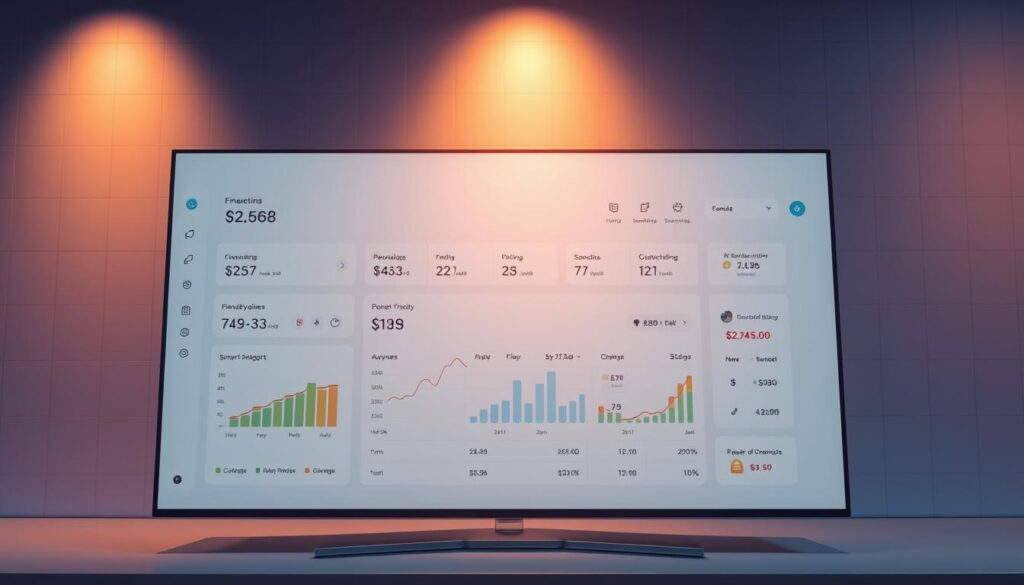
Modern financial platforms are revolutionizing how we manage our money with precision and ease. These solutions leverage advanced technologies to enhance accuracy, automate repetitive tasks, and provide actionable insights. By integrating machine learning and data analytics, they transform the way users approach their finances.
Enhancing Accuracy and Decision-Making
One of the standout features of these platforms is their ability to improve accuracy in financial planning. By analyzing vast amounts of data, they identify spending patterns and suggest savings opportunities4. This reduces errors and ensures budgets are more reflective of current financial situations.
For example, predictive analytics can increase budgeting accuracy by up to 25% by forecasting future expenses based on historical data5. This allows users to make informed decisions and prepare for unexpected costs. Platforms like Cube also provide scenario planning, reducing financial decision-making risks by 50%5.
Automating Tedious Financial Tasks
Automation is another key benefit, saving users an average of 10 hours per month5. Tasks like data entry, report generation, and expense categorization are streamlined, freeing up time for more strategic activities. This is particularly valuable for finance teams facing workforce shortages6.
Real-time tracking and alerts further enhance efficiency. Users can monitor their spending and receive notifications for overspending or upcoming bills4. This proactive approach helps maintain financial health and reduces unnecessary expenditures.
By integrating with traditional spreadsheets and ERP systems, these platforms ensure seamless data flow and improved collaboration6. This makes them indispensable tools for both individuals and businesses aiming for long-term financial stability.
Top Features Transforming Budgeting Tools
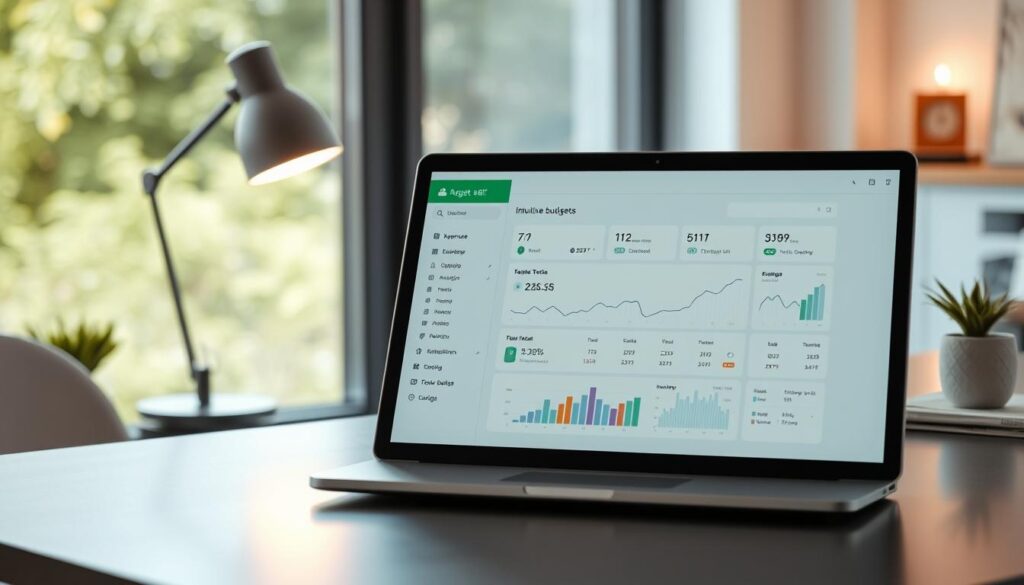
In 2025, financial management is no longer about guesswork but precision and adaptability. Modern platforms are equipped with advanced features that empower users to make smarter decisions. These innovations are designed to simplify complex tasks while providing actionable insights.
Real-Time Financial Insights
One of the most transformative features is real-time financial insights. Users can access updated data on expenses, income, and account balances instantly. This eliminates the need for manual updates and ensures accuracy in decision-making7.
Customizable dashboards play a crucial role in enhancing user experience. They provide visual reports that highlight trends and patterns, making it easier to identify areas for improvement8. For example, platforms like Cube integrate seamlessly with Excel and Google Sheets, offering a familiar interface for users9.
Automated What-If Scenario Analysis
Another game-changing feature is automated what-if scenario analysis. This allows users to simulate different financial outcomes based on varying assumptions. By testing multiple scenarios, individuals and businesses can prepare for potential challenges and opportunities8.
Leading platforms like Mosaic Tech leverage this capability to reduce planning cycle times by up to 50%7. This efficiency enables finance teams to focus on strategic tasks rather than manual calculations. The result is a more dynamic and proactive approach to financial management.
These features are not just for enterprises. Personal users also benefit from advanced tracking and analysis, which promote better financial health and long-term stability9. By integrating with legacy systems, these tools ensure compatibility and ease of use across different environments.
Comparative Overview of Leading Platforms
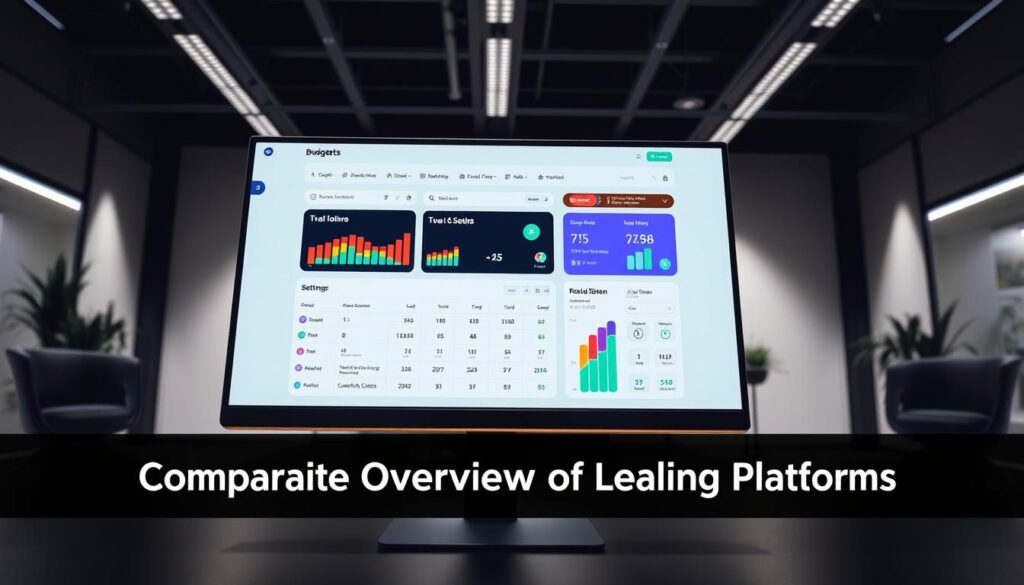
Choosing the right financial platform can make or break your money management strategy. With so many options available, it’s essential to understand the strengths and weaknesses of each. This section provides an unbiased comparison of Cube, Datarails FP&A Genius, and Mosaic Tech, focusing on their unique features, pricing, and user experiences.
Cube: Precision and Integration
Cube stands out for its powerful AI capabilities and seamless integration with spreadsheets. It allows users to create dynamic budgets and forecasts with ease. The platform’s what-if scenario analysis is particularly useful for businesses looking to simulate different financial outcomes10.
Pricing for Cube starts at $1,500 per month, making it a premium option for larger enterprises11. Its robust features and real-time insights make it a top choice for finance teams needing advanced analysis.
Datarails FP&A Genius: Conversational AI and Real-Time Data
Datarails FP&A Genius leverages conversational AI to simplify financial planning. It connects to real-time data, ensuring decisions are based on the most accurate information12. This platform is ideal for mid-market companies seeking streamlined workflows and self-service reporting capabilities.
With pricing starting at $2,000 per month, Datarails offers a balance of sophistication and usability11. Its ability to integrate all finance data sources into a single platform is a significant advantage.
Mosaic Tech: ARC Capability and Scalability
Mosaic Tech’s ARC capability enables users to automate repetitive tasks and focus on strategic decision-making. Its driver-based planning links financial outcomes to operational metrics, making it adaptable to changing market conditions10.
Starting at $5,000 per month, Mosaic Tech is best suited for large enterprises with complex financial needs11. Its scalability and advanced features make it a powerful tool for long-term financial planning.
“The right platform can transform how you manage your finances, offering insights that drive smarter decisions.”
Each platform has its strengths, but the choice ultimately depends on your specific needs. Cube excels in integration and scenario analysis, Datarails shines with its conversational AI, and Mosaic Tech offers unmatched scalability. Understanding these differences can help you select the best solution for your financial goals.
Innovative AI Solutions for Expense Tracking and Forecasting
![]()
Expense tracking and forecasting have entered a new era with AI advancements. These solutions are transforming how individuals and businesses manage their finances by automating tedious tasks and providing actionable insights. From receipt categorization to predictive forecasting, AI is redefining financial management.
Expense Automation and Receipt Categorization
One of the most significant innovations is the automation of expense tracking. Platforms like Booke.ai use Optical Character Recognition (OCR) to scan receipts and extract relevant data without manual input13. This reduces errors and saves time, allowing users to focus on strategic tasks.
AI algorithms categorize transactions based on historical data and spending patterns. This ensures standardized reports and eliminates the need for manual categorization13. For example, tools like Expensya process over 6,000 transactions daily, improving accuracy and efficiency13.
Predictive Budget Forecasting and Trend Analysis
AI-powered platforms also excel in predictive forecasting. By analyzing historical data, these tools forecast future expenses with remarkable precision13. This helps users prepare for unexpected costs and optimize their budgets.
Trend analysis is another critical feature. AI compares real-time inputs with historical data to identify spending patterns and anomalies14. This allows users to make informed decisions and improve their financial health. Platforms like Planful and PlanGuru offer advanced modules for cash flow management and scenario planning13.
“AI-driven expense management not only saves time but also enhances accuracy, making it indispensable for modern finance teams.”
These innovations are not limited to enterprises. Personal finance apps also benefit from AI-powered tracking and forecasting. By integrating with other financial tools, these platforms consolidate data and provide a holistic view of spending and savings goals15. For more insights on maximizing financial efficiency, explore our guide on AI tools for financial success.
Integration of Budgeting Tools with Existing Financial Systems
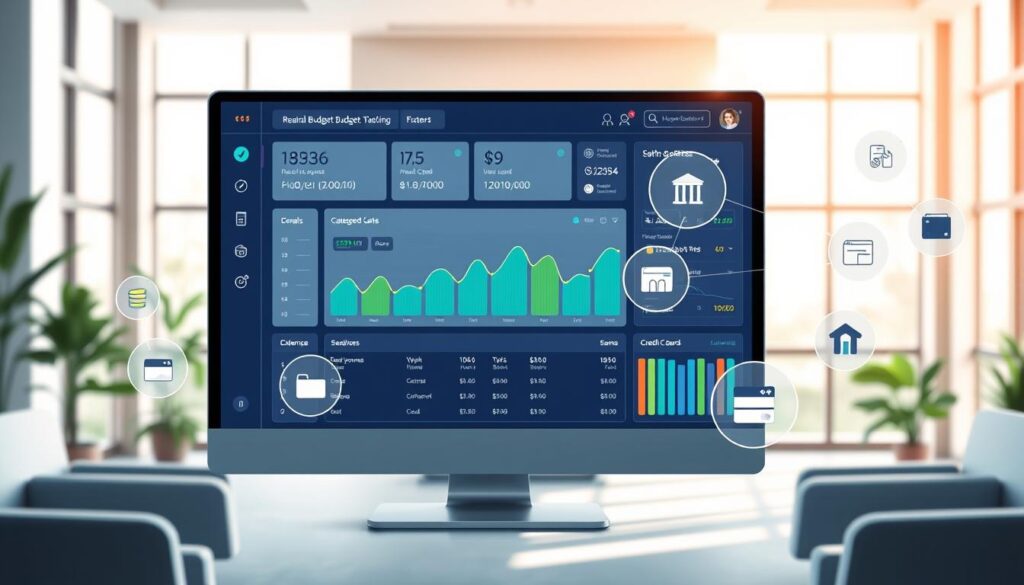
The integration of financial tools with existing systems is reshaping how businesses manage their money. By connecting modern platforms with traditional accounting software, companies can streamline workflows and enhance efficiency. This seamless connectivity ensures that data flows smoothly, reducing manual effort and improving accuracy.
Seamless Spreadsheets and ERP Connectivity
One of the standout features of modern platforms is their ability to integrate with spreadsheets and ERP systems. Tools like Cube automatically sync with Excel, Google Sheets, and ERP software, delivering real-time updates16. This eliminates the need for manual data entry and ensures that financial reports are always up-to-date.
For example, companies using platforms like Vena Solutions have seen a 20% increase in efficiency when integrating with Excel workflows16. This seamless connectivity bridges the gap between traditional financial systems and advanced tools, making it easier for users to manage their finances.
Consolidating data from multiple sources into one platform is another key benefit. This allows users to access a unified view of their financial health, improving decision-making and reducing errors17. Enhanced reporting capabilities and real-time insights further streamline the process, enabling teams to respond quickly to market changes.
Automation plays a crucial role in reducing manual tasks. Platforms like Workday Adaptive Planning cut the time spent consolidating data by 30%, enhancing overall accuracy in financial forecasts16. This not only saves time but also ensures that financial data is reliable and actionable.
“Integration is the backbone of modern financial management, ensuring that data flows seamlessly across systems.”
By integrating with bank accounts and other financial systems, these platforms provide enhanced control over transaction data. Users can track expenses, monitor income, and manage bills more effectively. This level of integration is essential for businesses looking to optimize their financial processes and achieve long-term stability.
To learn more about how these innovations are transforming the industry, explore our guide on AI in finance.
User Experience and Interface: Optimized for Modern Finance Teams
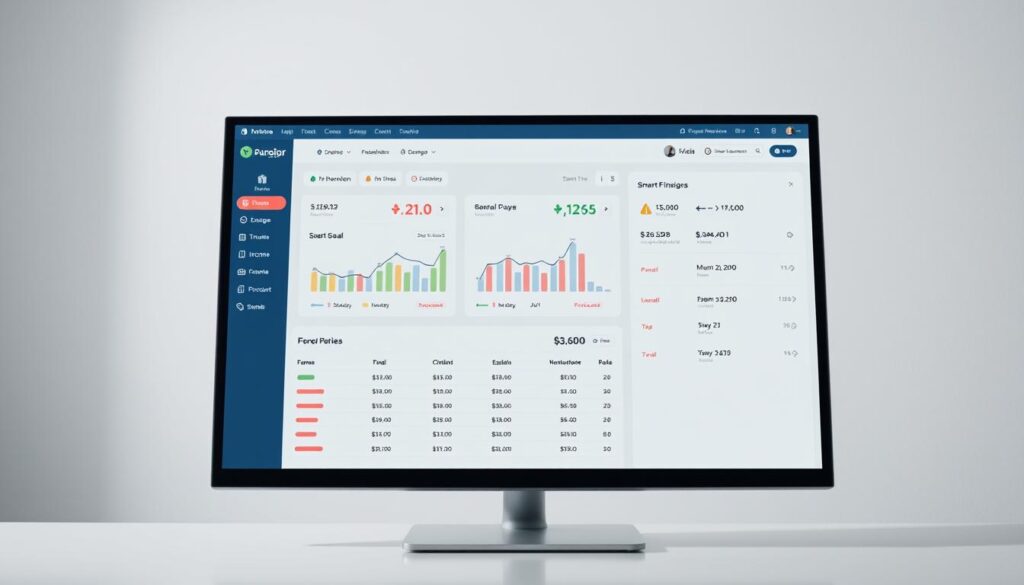
A seamless user experience is essential for effective financial management in today’s fast-paced world. Modern platforms are designed to simplify complex tasks while providing actionable insights. The focus is on creating interfaces that are intuitive, customizable, and collaborative.
Customizable Dashboards and Visual Insights
Customizable dashboards are a standout feature of modern financial platforms. Users can tailor their views to focus on key metrics like expenses, income, and account balances. This personalization ensures that critical information is always accessible18.
Visual insights, such as graphs and charts, make it easier to identify trends and patterns. These tools allow users to track their financial health and make informed decisions19. For example, platforms like Cube integrate seamlessly with Excel, offering a familiar interface for users18.
Intuitive Design for Collaborative Work
An intuitive interface is crucial for managing complex financial data. Modern platforms are designed to reduce learning curves, enabling users to navigate effortlessly. This is particularly important for teams working collaboratively on budgets and forecasts19.
Real-time updates and interactive communication tools enhance teamwork. Users can share insights, discuss strategies, and make decisions quickly. This streamlined approach improves productivity and ensures that everyone is on the same page18.
Feedback from users highlights the ease of managing bills and transactions. The integration of visual reports and real-time notifications keeps teams informed and proactive19. These design elements not only save time but also drive better financial outcomes.
“A well-designed interface transforms how teams manage their finances, making complex tasks simple and efficient.”
By focusing on user experience, modern platforms empower finance teams to work smarter. The combination of customizable dashboards, intuitive design, and real-time insights ensures that users can keep track of their finances with ease. This sets the stage for discussions on scalability and security in the next section.
Scalability and Security in AI-Based Budgeting Platforms
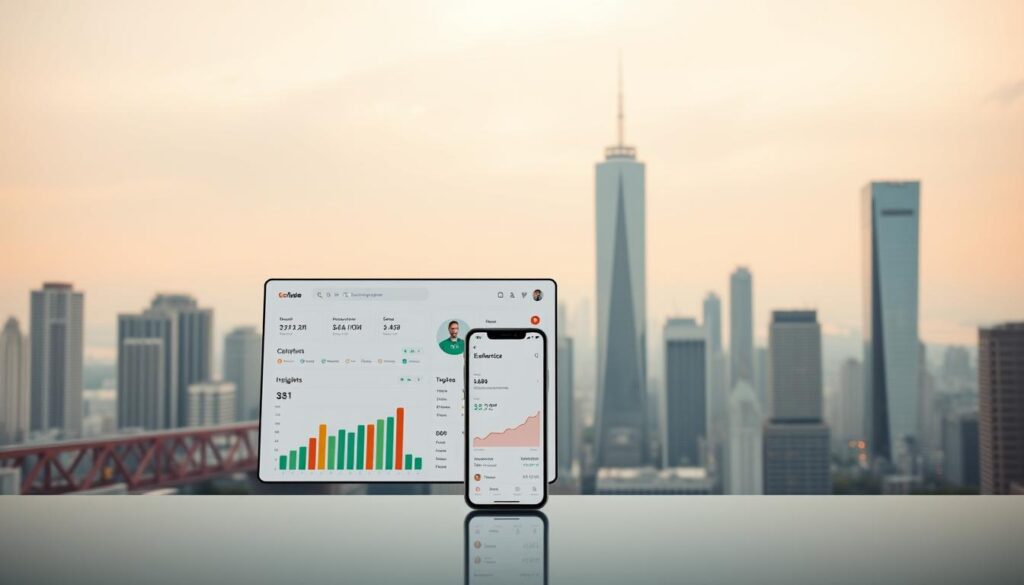
As businesses grow, their financial systems must adapt to handle increasing complexity. Modern platforms leverage cloud-based technology to ensure scalability and robust security. These features are essential for managing large datasets and enabling seamless collaboration across teams.
Cloud-Based Scalability and Multi-User Collaboration
Cloud-based systems allow businesses to scale effortlessly as their needs evolve. Platforms like Cube and Vena Insights support multi-user collaboration, enabling teams to work together in real-time20. This ensures that financial data is always up-to-date and accessible to authorized users.
Scalability is particularly important for growing businesses. With cloud technology, companies can handle increasing data inputs without compromising performance21. This flexibility is crucial for maintaining efficiency and accuracy in financial management.
Data Encryption and Robust Security Features
Security is a top priority for financial platforms. Advanced encryption methods, such as 256-bit encryption, protect sensitive information from unauthorized access20. This ensures that financial data remains secure, even when accessed by multiple users.
Robust security protocols also include real-time surveillance and anomaly detection. These features help identify and respond to potential threats quickly21. By integrating secure cloud systems, platforms provide a balance between ease of access and stringent security controls.
For more insights on how these innovations are transforming financial management, explore our guide on AI tools.
Leveraging AI for Personal and Business Financial Management
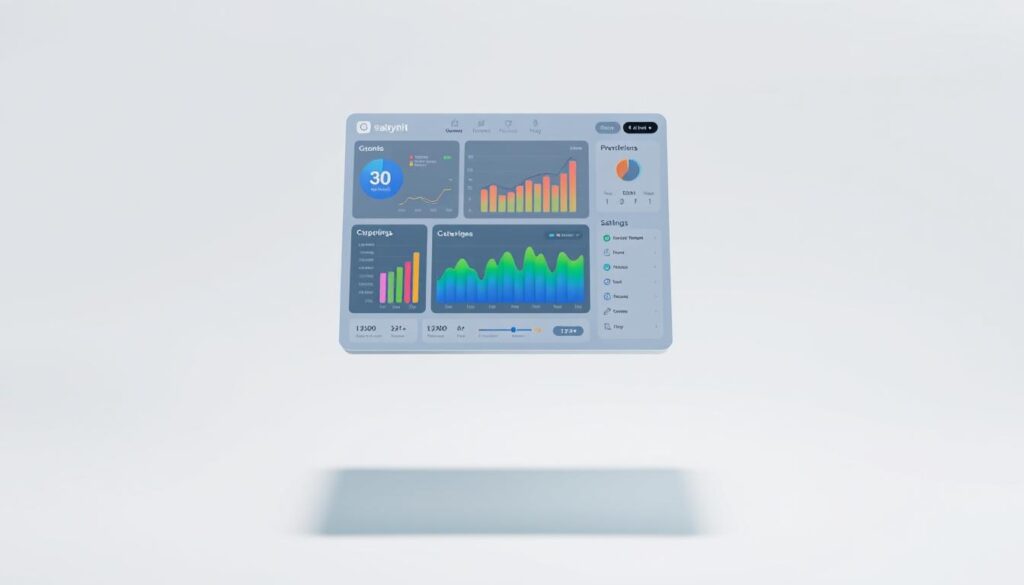
The intersection of technology and finance is reshaping how we manage money. From individual budgets to enterprise planning, advanced solutions are simplifying complex tasks and providing actionable insights. These innovations cater to both personal and corporate needs, ensuring efficiency and accuracy in financial management.
Personal Finance Apps for Budgeting and Expense Tracking
Personal finance apps like YNAB, Mint, and PocketGuard are transforming how individuals manage their money. These platforms offer real-time tracking of expenses, income, and account balances, helping users stay within their budgets. Automation features categorize transactions and provide alerts for overspending, making it easier to maintain financial health22.
For example, YNAB uses a zero-based budgeting method, ensuring every dollar is allocated to a specific purpose. This approach promotes mindful spending and long-term savings. Mint, on the other hand, integrates with bank accounts to provide a comprehensive view of financial activity23.
These apps also offer predictive analysis, forecasting future expenses based on historical data. This helps users prepare for unexpected costs and optimize their spending habits. By leveraging AI, personal finance apps empower individuals to make informed decisions and achieve their financial goals22.
Enterprise-Grade FP&A Solutions for Corporate Use
For businesses, enterprise-grade solutions like Anaplan and Workday Adaptive Insights are revolutionizing financial planning and analysis. These platforms provide advanced features such as scenario planning, predictive analysis, and real-time insights. They enable finance teams to make data-driven decisions and respond quickly to market changes23.
Anaplan, for instance, offers driver-based planning, linking financial outcomes to operational metrics. This allows businesses to adapt to changing conditions and optimize their strategies. Workday Adaptive Insights provides customizable dashboards and visual reports, enhancing collaboration and decision-making.
These tools also integrate seamlessly with existing systems, ensuring data flows smoothly across platforms. Automation reduces manual tasks, saving time and improving accuracy. By leveraging AI, enterprise solutions empower businesses to achieve long-term financial stability and growth23.
“AI is not just a tool; it’s a game-changer for financial management, offering insights that drive smarter decisions at every level.”
Whether for personal or corporate use, AI-powered platforms are transforming how we manage finances. They simplify complex tasks, provide actionable insights, and ensure accuracy in decision-making. To explore more about how these innovations are shaping the future, check out our guide on AI tools for financial success.
Pricing, Value, and Subscription Models
Understanding the cost structure of financial platforms is key to making informed decisions. Pricing models vary widely, offering flexibility for different financial needs. From free versions to premium subscriptions, these tools cater to both individuals and businesses.
Cost-Effective Plans and Tier Comparisons
Many platforms provide tiered pricing to suit various budgets. For example, Gusto offers plans starting at $40/month, with additional costs per user24. Ramp provides a free plan, while its Plus tier costs $15/user/month24. These options ensure scalability for growing businesses.
Enterprise-level solutions like Planful and Jedox focus on advanced features such as predictive forecasting and scenario analysis. While specific pricing is not publicly disclosed, these platforms are designed for companies with complex financial needs24.
Understanding Free vs. Premium Features
Free versions often include basic features like expense tracking and account monitoring. However, premium plans unlock advanced capabilities such as real-time insights and automated reporting25. For instance, Booke.ai offers a Data Entry Automation Hub for $20/month and a Robotic AI Bookkeeper for $50/month24.
Hidden costs, such as additional fees for integrations or support, can impact long-term value. It’s essential to evaluate the total cost of ownership before committing to a plan26.
“The right pricing model balances affordability with access to essential features, ensuring value for money.”
Subscription models provide predictable costs and recurring revenue streams, enhancing customer loyalty25. Free trials allow users to test platforms before making a commitment, ensuring the chosen tool meets their needs.
By comparing pricing and features, users can select the best platform for their financial goals. Whether for personal or business use, understanding the cost structure is crucial for maximizing value.
Expert Insights and Real-World Applications
The transformative impact of financial technology is evident in real-world applications across industries. Companies and individuals alike are leveraging advanced platforms to streamline their financial processes, achieve greater accuracy, and save time. This section explores customer success stories, expert opinions, and measurable outcomes that highlight the value of these solutions.
Customer Success Stories and Case Studies
One notable example is a mid-sized company that implemented Cube to enhance its financial planning. By using the platform’s real-time insights and scenario analysis, the company reduced its planning cycle time by 30%27. This allowed the finance team to focus on strategic tasks rather than manual calculations.
Another case involves a small business that adopted PocketGuard to manage its expenses. The platform’s simple interface and real-time tracking helped the business identify unnecessary spending, saving over $5,000 annually27. These examples demonstrate how financial tools can drive efficiency and cost savings.
Experts also emphasize the importance of choosing the right platform.
“The key to success lies in selecting a solution that aligns with your specific needs and integrates seamlessly with existing systems,”
says a leading financial consultant. This ensures maximum value and long-term benefits.
For individuals, platforms like YNAB and Mint have proven effective in improving financial health. YNAB’s zero-based budgeting method helps users allocate every dollar, promoting mindful spending27. Mint, on the other hand, offers free expense tracking and automatic categorization, making it accessible to a wide audience27.
These real-world applications underscore the versatility and effectiveness of modern financial solutions. Whether for personal or business use, these tools are transforming how we manage money, offering insights that drive smarter decisions and long-term stability.
Conclusion
The future of financial management is here, offering smarter ways to handle money with precision and ease. Advanced platforms provide real-time insights, enabling users to make informed decisions quickly. These solutions automate repetitive tasks, saving time and reducing errors28.
Integration with existing systems ensures seamless data flow, enhancing collaboration and accuracy. For example, platforms like Cube sync effortlessly with spreadsheets, delivering up-to-date information28. This connectivity simplifies complex financial processes, making them accessible to both individuals and businesses.
Predictive analysis and scenario planning are key features that empower users to prepare for future challenges. By leveraging historical data, these tools forecast expenses and income with remarkable precision29. This proactive approach promotes better financial health and long-term stability.
To explore how these innovations can transform your financial management, check out our guide on AI-driven financial solutions. Embrace these advancements to stay ahead in 2025 and beyond.
FAQ
What are the key benefits of using AI-driven budgeting tools?
How do AI budgeting platforms improve expense tracking?
Can AI budgeting tools integrate with existing financial systems?
What security features do AI-based budgeting platforms offer?
Are there cost-effective options for personal and business use?
How do AI tools help with financial forecasting?
What makes 2025 a pivotal year for smarter budgeting?
Can these tools be customized for different financial needs?
How do AI budgeting tools handle collaborative work?
What are the advantages of cloud-based budgeting platforms?
Source Links
- Easy Tools To Manage And Grow Your Money In 2025
- Smart Finance: How AI is Shaping the Future of Budgeting and Investing
- How AI is Transforming Personal Finance in 2025 – AI Wealth Lab
- Budgeting 2.0: How AI is Revolutionizing the Way We Manage Money | Choice One Community Credit Union
- AI-Powered Budgeting in 2024: The Ultimate Guide to Smarter Money Management
- The Budgeting Process: Governments Find Power in AI
- AI FP&A tools for 2025: Top 5
- How Modern Budgeting and Forecasting Tools are Transforming Financial Planning – Delbridge Solutions
- 10 Best Budgeting Tools – 2024 [Free] – GeeksforGeeks
- 15 Best Business Budgeting & Planning Software for SaaS
- Effective AI tools for budgeting
- 9 Best AI Finance Tools – Datarails
- 10 AI Advancements in Expense Management
- AI Expense Management Solutions for Streamlined Financial Tracking and Optimization | cc:Monet AI Finance Assistant
- AI-Powered Forecasting & Budgeting Tools – Smart Financial Planning
- Implementing AI-Driven Automation in FP&A: A Step-by-Step Guide
- Top AI tools for FP&A leaders in 2025
- How To Build AI-Driven Financial Applications – a Product Owner’s Guide
- AI-Powered Financial Modeling – Smarter Insights, Faster Decisions | SmartDev
- Mastering AI in Corporate Money Management to Fuel Growth
- Leading Element Driving Change in the Budgeting Assistance Market in 2025: Rising Adoption Of Cloud-Based Solutions Fuels Growth In The Market With Increasing Demand For Scalability And Data Security Driver
- How AI is Transforming Personal Finance Management – effiEase
- How AI is Supercharging Money Management
- 14 best AI budgeting tools and software [2024 review]
- Orb | 7 AI pricing models and which to use for profitable growth
- Artificial intelligence may be a game changer for pricing
- Top AI Budgeting Tools to Manage Your Finances in 2025
- Smart Finance: How AI is Shaping the Future of Budgeting and Investing
- Beyond Spreadsheets: AI-Driven Budgeting – The Financial Executives Journal







